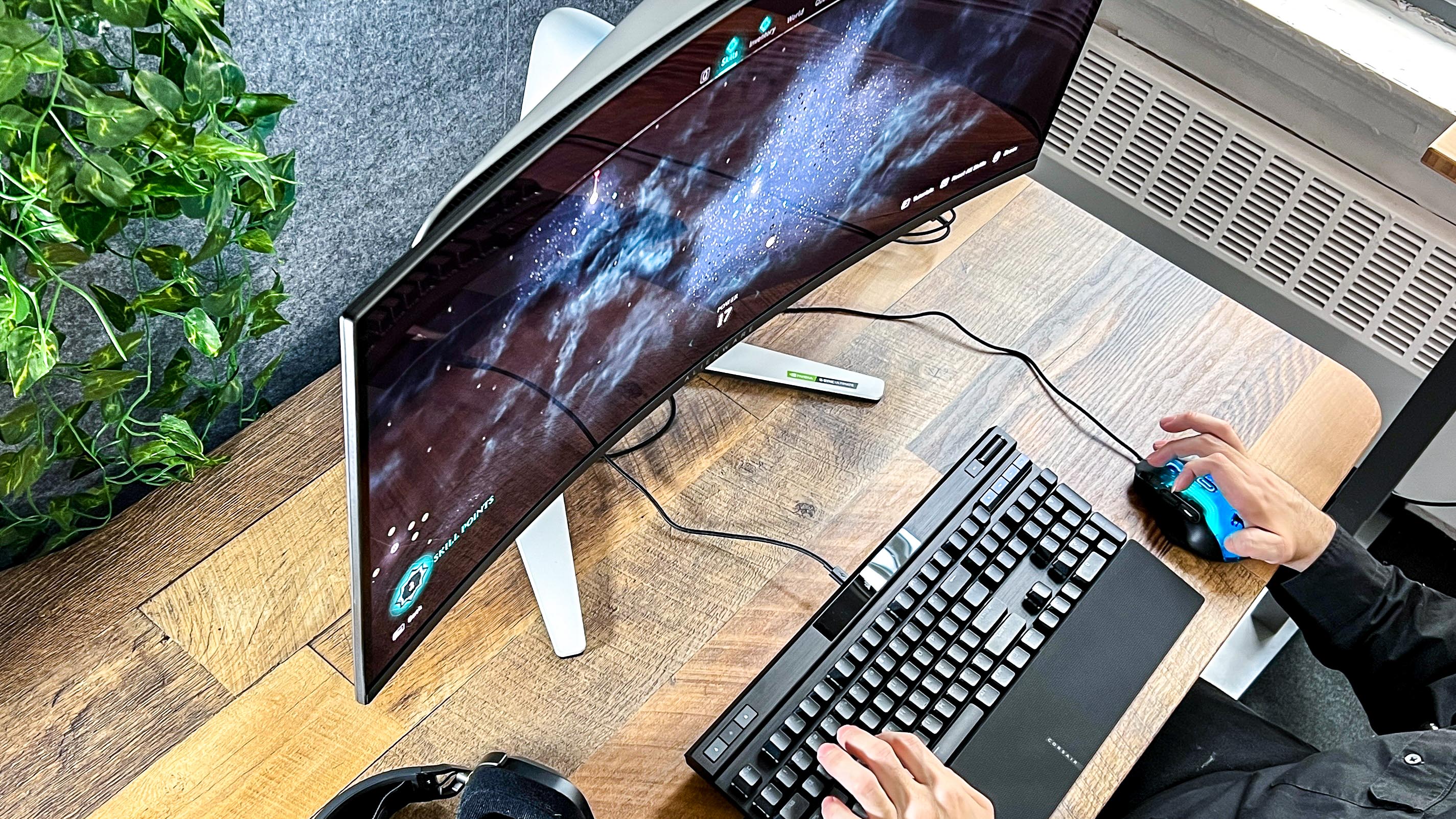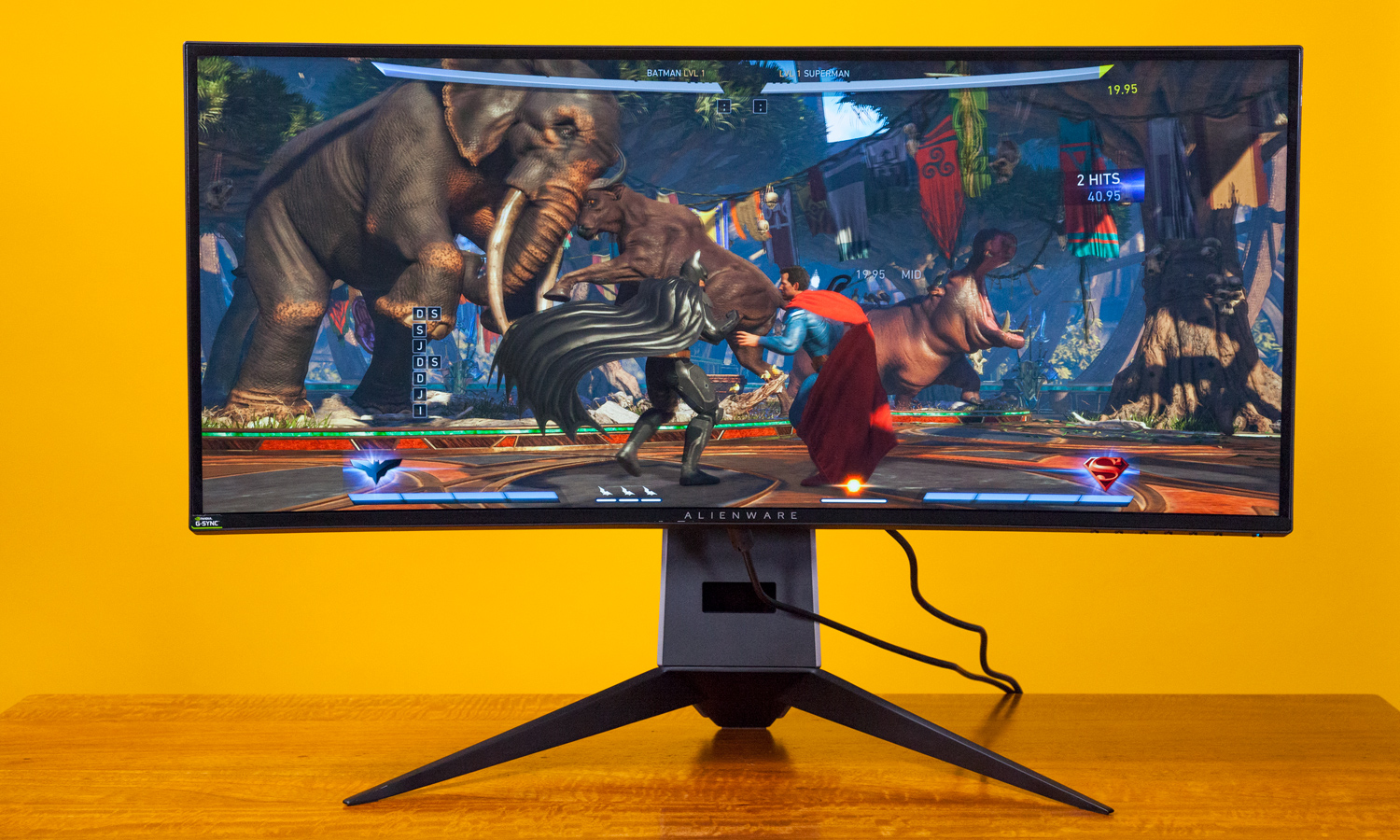Curved gaming monitors – 4 reasons to buy and 5 reasons to skip
Should you get a curved gaming monitor? Here are some arguments for and against

Curved gaming monitors are worth considering if you’re an avid PC gamer. The best curved monitors wrap around your field of view, allowing you to see more at the same focal distance as a standard display. This may not only enhance immersion when playing the best PC games, but can also help reduce eye strain. They can also benefit you by providing fast response times and high refresh rates. When paired with the best gaming PCs, curved monitors are extremely beneficial.
While curved monitors like the recently announced Corsair Xeneon Flex OLED can provide tangible benefits for gamers, they come with some setbacks. These monitors are generally pricier than the best gaming monitors and best monitors. Curved monitors also take up more room on a desk and are generally heavier than flat monitors. Outside of gaming, curved monitors may actually hinder one’s work.
Below, we detail reasons you may want to buy a curved monitor for your gaming setup along with reasons you may want to get a traditional flat one instead.
Curved gaming monitors: Reasons to buy
Immersion
Greater immersion is often the chief reason to get a curved gaming monitor. A curved monitor takes up more of your peripheral vision, which helps make playing games feel more immersive. The monitor’s curvature also creates perceived depth without the need for 3D glasses. Because of these factors, you feel as if the game is happening around you rather than just being in front of you like on a flat panel monitor.
Greater field of vision
The heightened immersion happens because of a curved monitor’s greater field of vision (FOV). It can be easier to see what’s around you because of the better viewing angle. A curved monitor could help when playing a fast-moving game like Call of Duty: Vanguard since you can see more of the environment – allowing you to get the drop on a foe or alert you before they attack.
Get instant access to breaking news, the hottest reviews, great deals and helpful tips.
Less head movement
Because a curved monitor takes up more of your peripheral vision, you don’t have to swivel your head as much (or at all) to see what’s in front of you. This reduces the chance of potential neck strain or injury.
Less eye strain
Curved monitors compliment the natural spherical shape of your eyes. Some studies suggest that curved monitors reduce stress on your eyes because they refract light in a way that more closely resembles the way your eyes absorb light. With less eye strain, you’re able to play for extended periods.
Curved gaming monitors: Reasons to skip
Higher price
Curved monitors tend to be more expensive than flat panel monitors. For example, the Alienware 34 QD-OLED currently costs $1,299. The Acer Predator X34 can cost anywhere between $1,000 to $1,400, depending on the vendor. Even the MSI Optix MPG27CQ, which is ostensibly a “budget” curved monitor, costs $500. If you want a curved gaming monitor, prepare to pay a premium.
Require more space
You’ll need to set aside plenty of room for a curved monitor since it can take up more space on a desk than a traditional flat-screen monitor. This is because curved monitors have a 21:9 aspect ratio, which is wider than the standard 16:9 of regular monitors. A curved monitor’s depth and size also demand more space – as do the larger stands necessary to support the heavier monitor.
Not all games support widescreen
Having an ultrawide viewing angle in modern titles like Far Cry 6 helps draw you into the action. This is true for many games that support 21:9 aspect ratios. But generally speaking, 2D titles and older 3D titles don’t support wider aspect ratios. Consoles like PS5 and Xbox Series X also don't support ultrawide aspect ratios. Playing games that have unused space on the sides (or black bars) can be immersion-breaking. This is also why watching TV shows and movies filmed in 16:9 is less-than-ideal on a curved monitor or curved TV.
Limited viewing angles
Because a curved monitor is tailored around your field of view, you’ll have to sit directly in front of it to get the best picture possible. This isn’t normally a problem if you’re playing a video game, but if you plan to watch a movie with others, they may not get the best picture quality since they aren’t sitting directly in front of the screen. If you frequently entertain guests, this could be a major issue.
Not ideal for creative work
Curved monitors are great for gaming but aren’t always suited for creative work such as digital art and video editing. This is because a curved monitor can distort an image. Such a thing is especially troublesome when working on art that will eventually get displayed on flat surfaces. What you see on a curved monitor may not represent what others will see. Those working on architectural projects might be hampered by a curved screen that could distort straight lines.
Should you get a curved gaming monitor?
Curved gaming monitors are somewhat of a point of contention among the PC gaming community. Some folks swear by them for the reasons outlined above. And while these monitors have their drawbacks, there is a market for them. With that said, if you seldom play PC games then you’re better off with a flat panel monitor since they are cheaper, lighter, and useful for more than just video games.

Tony is a computing writer at Tom’s Guide covering laptops, tablets, Windows, and iOS. During his off-hours, Tony enjoys reading comic books, playing video games, reading speculative fiction novels, and spending too much time on X/Twitter. His non-nerdy pursuits involve attending Hard Rock/Heavy Metal concerts and going to NYC bars with friends and colleagues. His work has appeared in publications such as Laptop Mag, PC Mag, and various independent gaming sites.


